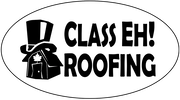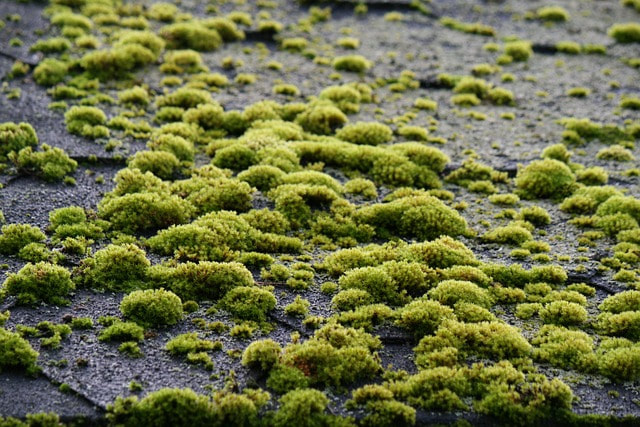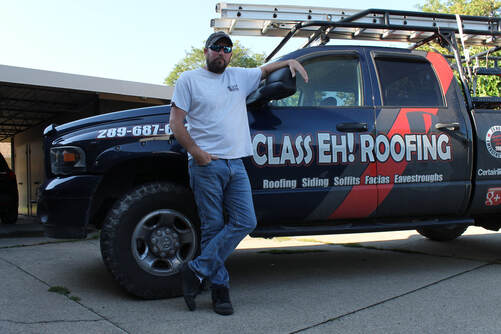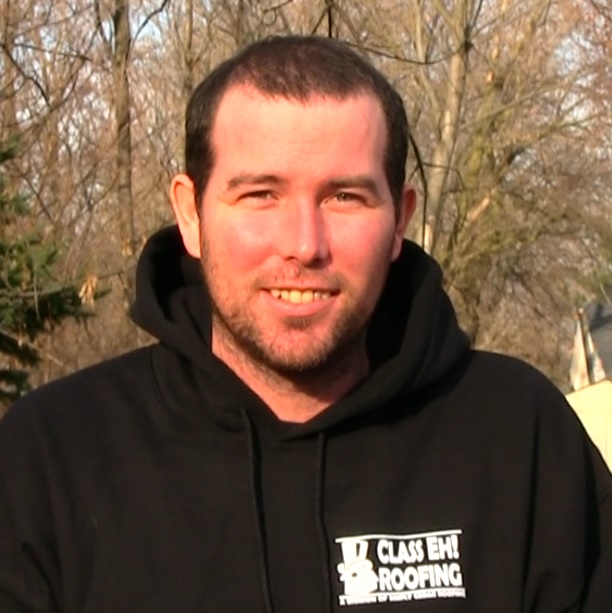|
Moss is a common occurrence on a roof, so if you see it should you be concerned and what should you do? Why is Moss Bad for Shingles? You may feel that a bit of moss gives your roof some charm. While moss may be beautiful, it is a detriment to your roof. Here’s why: -Most plants gather water from their roots, but mosses gather water from their leaves. Therefore, they do not mind that shingles, unlike soil, are a dry and relatively nutrient-free environment. They will grow roots directly into the shingles, which can destroy the shingles and create the opportunity for leaks. -When it rains, moss will soak up water and retain it, creating consistently wet conditions on your roof. Moss growth will also interfere with proper drainage of water off the roof as water needs to trickle through or around the moss instead of running straight down to the gutters. The resulting constant exposure to water can degrade shingles. -Over time, moss can also work its way under shingles, lifting them up. This uplift creates opportunities for water to penetrate lower layers of the roof and, potentially, your home. While minor moss infections may not cause many issues, it is likely to become severe over time. Once you spot moss growth on your roof, you should take steps to resolve it. If you have a severe infection, you may have no choice but to remove the shingles that have been damaged by it. A professional roofer can help you assess what kind of intervention your roof needs. What if the Moss Appears Dead? If the weather has been consistently dry, moss may appear to be dead. However, some species of moss can stay alive when dried out for months. All it will take is one rain for it to recover and continue growing. If your moss has dried out, take the opportunity to have a roofer remove the moss from the roof. How To Remove Moss From a Roof If your roof has sprouted a moss infection, you can remove it before it becomes serious enough to impact the performance of your roof. Moss is tough and typically you will not be able to remove it by hand. However, you can use a chemical solution to loosen the moss without damaging the shingles. We don’t recommend that you step on the roof for moss removal. Materials You’ll Need A garbage bag. A garden hose. A ladder (familiarize yourself with ladder safety before you start). A moss-specific cleaner that does not use bleach and is rated by the EPA. Or your own cleaner mix of mild bleach or mild detergent mixed with water in a spray bottle. You may mix 2 cups of chlorine bleach with 2 gallons of water. Or you can use 8 ounces of dish soap with 2 gallons of water. How To Remove Moss From a Roof Step One: Safely set up your ladder near the moss. With either your homemade cleaner or a store-bought option, spray the moss. Step Two: Follow the store-bought cleaner’s instructions for how long you should leave the cleaner on the moss. If using a homemade spray, leave it on for 15-20 minutes. Step Three: Using your garden hose on low pressure, rinse the moss thoroughly. You should find that most of the moss will come off from the spray of the water. Be sure not to direct a pressurized spray beneath the shingles or directly against the shingles such that they might lift up. Otherwise, you could create a leak. Even if the moss is not coming off, rinse thoroughly. It is very important to remove all of the cleaner that you sprayed on, or you could damage your shingles. Step Four: Any remaining moss should now be loosened enough that you can manually remove it from the shingles. While standing on the ladder, gently lift the moss off the shingles and place it in your garbage bag for disposal. You can secure the garbage bag to your ladder so that you can always have one hand on the ladder. Step Five: If some moss is still too ingrained on the roof to be removed by hand, you should not resort to other methods, such as using a brush or a pressure washer, as they may damage the roof. Instead, consult with a professional roofer as to what your next steps should be. Methods You Shouldn’t Use To Remove Moss From a Roof Unfortunately, there is a lot of bad advice out there about how to remove moss. While these methods may be effective at removing moss, they may also damage shingles in the process. We don’t recommend you try to remove your moss by: -Scrubbing: You may be tempted to scrub the moss off the shingles because moss grips shingles quite strongly. However, scrubbing is likely to damage the asphalt shingles and remove their granules. -Pressure washing: Pressure washers can be very strong and certainly strong enough to break a shingle’s adhesive and lift it up. They also can strip asphalt shingles of their granule surface, which can ruin their performance and destroy their color. Any amount of pressure washing can cause serious problems with the roof, including major leaks. Never use a pressure washer or a pressurized stream of water on your roof. -Using harsh chemicals: High concentrations of bleach and other chemicals may do permanent damage to the shingles, increasing your risk for leaks. Using any of these methods may also void your limited warranty on the roof. If you’re in doubt about the safety or effectiveness of a moss removal method you want to try, consult with a professional roofer. Why Shouldn’t I Add a New Roof Over Moss? When you need a new roof, it may be tempting to add a second layer of shingles over your existing shingles. Doubling up your shingles can save time and expense on your roof replacement as your roofer doesn’t need to remove and dispose of the old shingles. This strategy is convenient for homeowners because the replacement won’t take as long or make as much of a mess. However, there are some circumstances where merely adding a new layer of shingles isn’t a good idea. For example, when you have significant moss growth on your roof, simply covering it up with new shingles isn’t wise. Several potential problems may occur if your roofer simply adds a new roof over your existing, moss-covered roof. These potential problems include: -Unknown roof condition: If moss growth is severe, it may have compromised the quality of your existing decking and underlayment. The only way to know for sure is to remove the shingles and look at these other layers. If your roofer doesn’t do this, they may be compromising the quality of your new roof. Damaged underlayment and decking can interfere with the proper function of your new shingles. Moss won’t die immediately and may continue to erode the decking, which increases the risk of a roof collapse. -Bumps in the roof: The combination of damaged and swollen decking along with moss growth can make for a new roof installation that is anything but smooth. Bumps and dips in the roof surface can interfere with the proper drainage of water off the roof and prevent the shingles from sealing properly. This uneven surface may also reduce your curb appeal. -Unsafe conditions for roofers: Your roofers will need to walk on your old roof to install a new one above it, and moss makes for very unstable ground. It is liable to slip beneath their feet and could cause a fall. While roofers will wear a personal fall arrest system (PFAS) for safety, increasing their likelihood of a fall is not wise. -Secondary infections: When moss is cut off from sunlight, it will eventually die. However, the dead moss will still be on your roof, where it may serve as a valuable source of water and nutrients for mold and fungi, which can grow in darkness. If you leave mold in place beneath your new roof, you risk secondary infections that can spread into your attic and harm your home. Rot and mold can harm your structural wood, damage your drywall and make your air quality worse. -Voidance of your limited warranty: As it can cause all of the damage listed above, adding shingles over a moss-covered roof may also void your limited warranty on the new roof. The Benefits of Removing Moss-Covered Shingles Before a New Roof Installation While you may not necessarily have to remove the moss-covered shingles before a new roof installation, you should consider it. There are many benefits of removing the moss-covered shingles, including: -Reduce long-term costs: By removing the old roof, you keep the opportunity to double-up roof layers during your next roof replacement. The maximum layers of shingles allowed to be on the roof, according to most building codes, are two. So, once you use this strategy, you must tear off both roof surfaces during your next roof replacement. -Maintain home value: Are you planning on selling your home soon? A properly replaced roof is more likely to appeal to potential buyers, while a poorly replaced roof may negatively affect your home value. -Avoid the risk of damage: You can avoid all of the risks listed earlier in this article by simply removing all of the moss-covered shingles. How To Prevent Moss on Your New Roof Now that you have a brand-new roof, you’ll want to take steps to protect it from getting a moss infection as the last one did. Here are a few ways to prevent moss growth on your roof: -Remove sources of shade: Moss prefers to grow in the shade, so exposing more of your roof to sunlight will help deter it. You should consider trimming trees that shade out the roof or moving garden features, like pergolas or trellises, so that they do not cast shade on the roof. -Choose algae-resistant shingles: Where there’s moss, there is also algae (Gloeocapsa magma), as they thrive on the same wet and shady conditions. You can avoid an algae infestation by installing algae-resistant shingles, such as IKO’s Nordic™ shingles. Though algae-resistant shingles will not prevent moss, they will help you avoid pesky algae. -Install a metal strip: A copper, zinc or a galvanized metal strip installed on the ridge of the roof can prevent the growth of moss, algae and lichen. The strip will oxidize over time and wash down the roof plane when it rains, making the roof plane much less habitable for moss, algae and lichen. This is also why you might see a gap in the algae or moss growth directly beneath your existing flashing or next to an aluminum-sided dormer. However, it is important to note that adding a copper strip will take time to start inhibiting moss. You shouldn’t expect it to handle a current moss infestation by itself, only to prevent a new one. -Get regular inspections: Roofers can often prevent moss growth by ensuring that your roof is draining water properly. They should inspect and clean your gutters at least yearly to avoid the backup water that could attract moss. Do You Need Help Dealing With Moss? Whether you need to remove a few moss-infected shingles or replace the whole roof, a professional roofer is your best resource. Our team at Class EH! Roofing have proudly served the Niagara Region for over 15 years with all types of exterior products and services. If you would like a no obligation quote and inspection, please contact us for a quick response and excellent service today! ABOUT US
Class EH! Roofing is a leading roofing and home exterior renovation company located in Niagara-on-the-Lake, ON founded by Niagara resident Wayne Jeffreys over 15 years ago. With thousands of installations to our credit in the Niagara Region, an exceptional level of service and products as well as unbeatable warranties, the team at Class EH! Roofing are dedicated to excellence in everything they do. We specialize in the repair, maintenance, and installation of all residential and commercial roofing systems for the benefit of homeowners, property managers, condominium corporations, corporate clients, institutional customers, and individual building owners. Our courteous, experienced representatives, are trained to evaluate and provide our clients, with cost effective solutions for correcting existing roof leaks, roof replacement, and maintenance solutions. All of these solutions and services are designed to extend the life of your roof and building investment.
0 Comments
Leave a Reply. |
AuthorWayne Jeffreys is a native of Niagara-On-The-Lake and owner of Niagara based roofing company Class Eh Roofing! Archives
January 2024
Categories |




 RSS Feed
RSS Feed